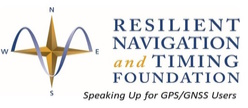Image: NOAA
Blog Editor’s Note: Interesting article.
Some thoughts about the RAND study mentioned, it said:
- Its not worth the cost to build another GPS-like system as a backup. We agree that duplicating GPS is not needed. (Note, China disagrees and has built GPS-like systems at GEO, MEO, and LEO, in addition to doing a bunch of terrestrial stuff. We should wonder why they are being so careful about ensuring they have great PNT.)
- It is worth the federal government’s time and money to establish a national timing architecture to complement and backup GPS. We agree and have published a white paper to that effect. Also agreeing are the telecom CEOs that reported to the President in May, and the telecom standards group that wrote to Congress in May.
- Commercial entities don’t and won’t have a business case to support e911 location in some places, so the federal government is going to have to get involved. We agree. We also agree with the telecom CEOs that it is almost impossible to compete with free GPS. So we would go beyond RAND and say that it is hard to imagine commercial entities supporting public safety hardly anywhere without a government contract, subsidy, or regulation.
The RAND study essentially said, ‘we don’t need a GPS backup, but we need to backup GPS.’ Way to muddle the message.

GPS at risk: Those signals are more vulnerable than you realize
That has people worried about how to protect them and what we’re doing for backup.
The Cessna Citation Excel was approaching the Sun Valley, Idaho, airport when something seemed off about its flight path. Like a lot of planes, it was tuned to GPS for guidance. Usually, that’s a good thing. On this day in August 2018, however, a problem arose. The GPS signals near the airport were unreliable, and smoke in the area made for poor visibility. The midsize business jet was off-course and flying too low in the mountainous terrain.
The likely cause for the wonky GPS readings? Military activity that caused jamming of the signals, according to an account from NASA’s Aviation Safety Reporting System, which collates information provided by pilots, air traffic controllers and other aviation professionals. Fortunately, radar on the ground provided a more accurate reading, and controllers got the plane to its destination safely.
It wasn’t an isolated event, according to reporting by IEEE Spectrum and others.



